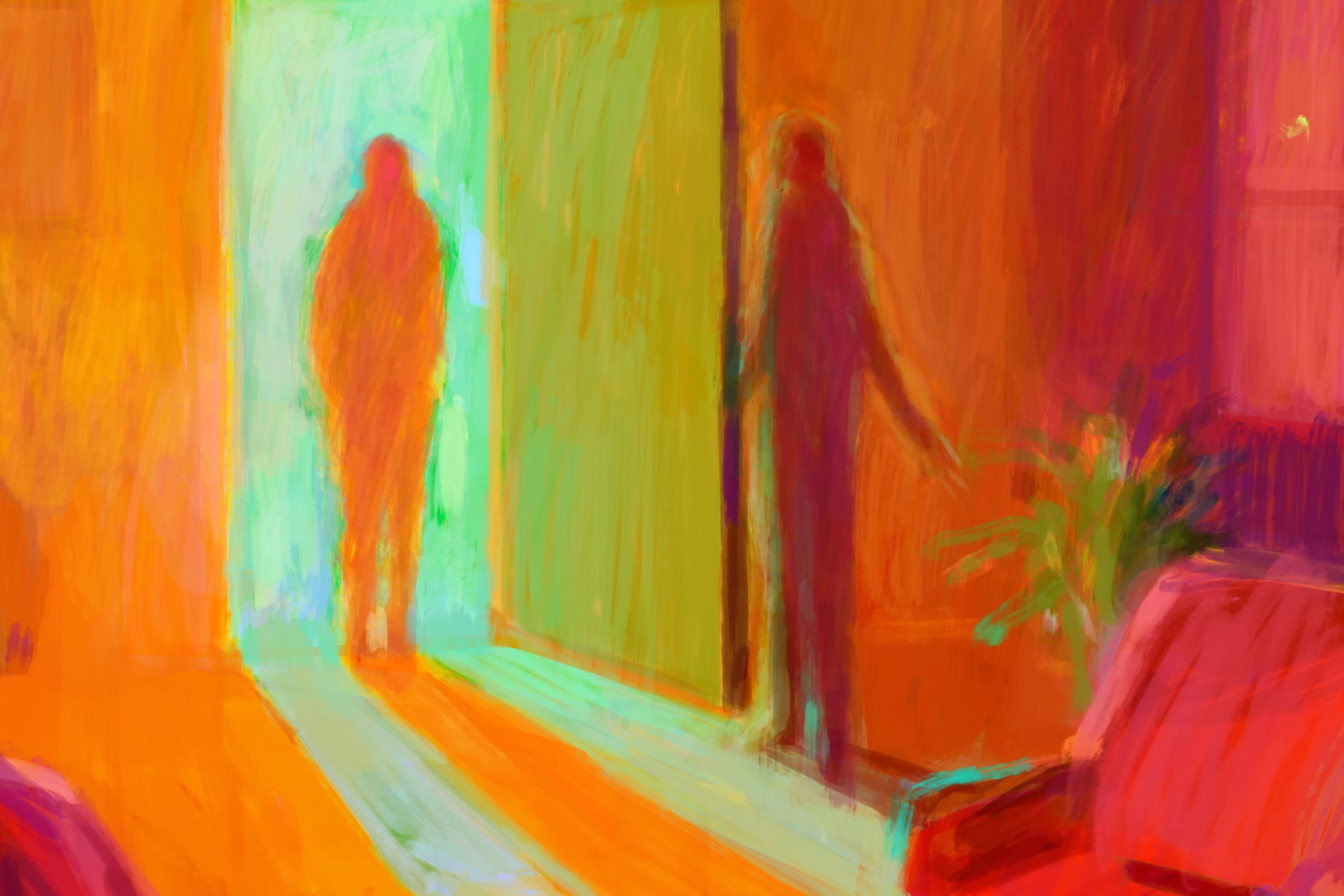During a panic attack, a Cambodian refugee had flashbacks to the genocidal Khmer Rouge regime of 1975-79: building dams for 12 hours a day, with a break only to sip a bowl of rice-flavoured water; carrying heavy containers of dirt on a pole balanced on their shoulders; and the constant threat of a gun butt to the back of the head from a soldier, for supposed laziness or stealing. The focus of the panic attack, though, was an intense fear of bursting blood vessels in the neck, which also happened to be the regime’s favoured method of execution.
‘Some patients survived the head blow and awoke to find themselves under a pile of corpses,’ wrote the anthropologist and psychiatrist Devon Hinton and his colleagues in 2006.
Hinton treated Cambodian refugees in psychiatric clinics in Massachusetts in the 2000s, and found their trauma and panic attacks manifested in different ways than for Western clients. Neck-focused panic attacks was one way. Orthostatically triggered panic was another: this was when a person experiences extreme dizziness upon standing, paired with memories of fainting from overwork, dizziness from malaria, and the nausea that came after seeing dead bodies.
To help relieve the refugees’ symptoms, clinicians needed a deeper cultural understanding. For such patients, Hinton paired cognitive behavioural therapy (CBT) approaches with relaxation and diaphragmatic breathing procedures, and he recognised their bodily complaints as expressions of trauma. He also introduced a culturally resonant visualisation; he asked people to imagine ‘a lotus bloom that spins in the wind at the end of a stem’. The lotus is a symbol of Asian cultural values of flexibility, and patients pictured the flower while also gently rotating and relaxing their neck.
This is just one story of culturally adapted CBT from a recent review of randomised trials addressing the cultural sensitivity of CBT, led by Stanley Huey Jnr, at the University of Southern California, and published in the Annual Review of Clinical Psychology. CBT is often referred to as the ‘gold standard’ therapeutic intervention because of its documented effectiveness. It’s based on the idea that our psychological problems come from unhelpful or biased ways of thinking. CBT focuses on recognising these distortions of thought and teaches patients strategies to modify their thinking patterns.
Huey’s review found that, while CBT was still effective for ethnic minority patients, there are indications that it might work slightly less well for them than for white people. The ‘effect sizes’ (a statistical measure of an intervention’s beneficial impact) for white people were always higher than those for minorities, even if CBT still helped all groups.
‘CBT is the gold standard, but most of the clients in these randomised clinical trials [showing CBT’s effectiveness] have been white clients,’ says Gordon Nagayama Hall, a psychologist at the University of Oregon who wasn’t involved in the new review, but co-authored a meta-analysis on the cultural adaptation of CBT in 2016. ‘We believe that these culturally adapted interventions are up to about 4.7 times better than un-adapted interventions.’
Some adaptations are helpful for obvious reasons: for instance, translating therapy into a person’s native language makes it twice as effective. Deeper adaptations involve changing the actual structure of the CBT method in ways that reflect a person’s cultural context or background, like Hinton did when he added a lotus flower to visualisation exercises.
‘[CBT] is very individualistic stuff,’ says Akihiko Masuda, professor of psychology at the University of Hawai‘i at Mānoa. When Masuda moved to the US from Japan around 30 years ago for his degree in psychology, he was exposed to CBT for the first time. Many East Asian cultures are more collectivist rather than individualistic, and he says this disconnect can be felt in therapy.
In one study included in the 2023 review, researchers tested a culturally adapted treatment for Asian American people with phobias. ‘Past research by cultural psychologists show[ed] that Asian cultures tend to place more value on social hierarchies and the legitimacy of authority,’ says Crystal Wang at the University of California, San Diego and a co-author of the new review. In therapy, that could show up as some Asian people preferring a more direct style from a trusted authority figure. Indeed, when therapists were more authoritative and direct, Wang says that ‘as expected, the culturally adapted treatment was more effective for Asian Americans.’
In another study from 2015, psychologists adapted CBT for depression in Pakistan, based on qualitative interviews with therapists and clients. Based on insights from those conversations, the researchers invited a family member to join the therapy sessions, and they included a session for the whole family at the start of the therapy. The therapists also learned and included Urdu idioms and folk stories into the treatment.
While these developments are promising, Wang says that understanding the impact of cultural adaptations is still in the early stages. Some trials in the review found no benefit of cultural tailoring; others suggested that the benefits don’t last. For example, a 2017 study of Black smokers found that people who were given culturally tailored care – including mention of historical medical and research distrust, health disparities, cultural values, experiences of racism, and African American mental health – were more likely to have stopped smoking for at least seven days at the end of their treatment, and again at a three-month follow-up, as compared with others who received standard treatment. But the group difference didn’t persist at six- and 12-month follow-ups.
One study (an unpublished doctoral thesis) mentioned in the review found that cultural adaptation – in terms of the languages used and the ethnicity of people involved – led to worse therapeutic outcomes. Hispanic college students who had phobias around giving speeches went through a video-feedback-based treatment in either English, or English and Spanish, and they practised giving speeches either in front of a white or a Hispanic audience. The participants who gave speeches in English to white audiences showed greater reductions in anxiety than the other groups.
‘Not all cultural adaptations are equal, but it is difficult to determine which are more culturally sensitive than others,’ Wang says.
Culturally adapted CBT might work best with people who highly identify with their cultures, and so assessing cultural fit is important before giving someone a culturally adapted therapy, Hall says. There is, of course, heterogeneity within cultural and ethnic groups as well.
‘Not all members of a group will react similarly to a treatment, and assuming that they will is a form of stereotyping,’ Wang says. ‘There is a fine line between being culturally sensitive and stereotyping people based on their ethnic backgrounds, and researchers are still trying to understand exactly where that line is.’
Importantly, how culturally competent a therapist perceives themselves to be has nearly no impact on outcome. ‘What does have an impact is clients’ perceptions of the therapist’s cultural competence,’ Hall says.
Still, Wang thinks that considering cultural variation is an improvement on the past, when it was assumed by therapists that a standard treatment would work for everyone. In Hinton’s work with Cambodian refugees, many hadn’t improved on medications such as antidepressants or anti-anxiety drugs, or other forms of supportive therapy, but they did respond to the culturally tailored treatment.
Hinton also talked to his patients about their trauma using Buddhist metaphors. ‘We’ll say: “If the mind is like the sky, these problems are like clouds, which will pass,” he said in a 2015 interview. ‘The key is understanding patients, and making sure they feel understood.’








